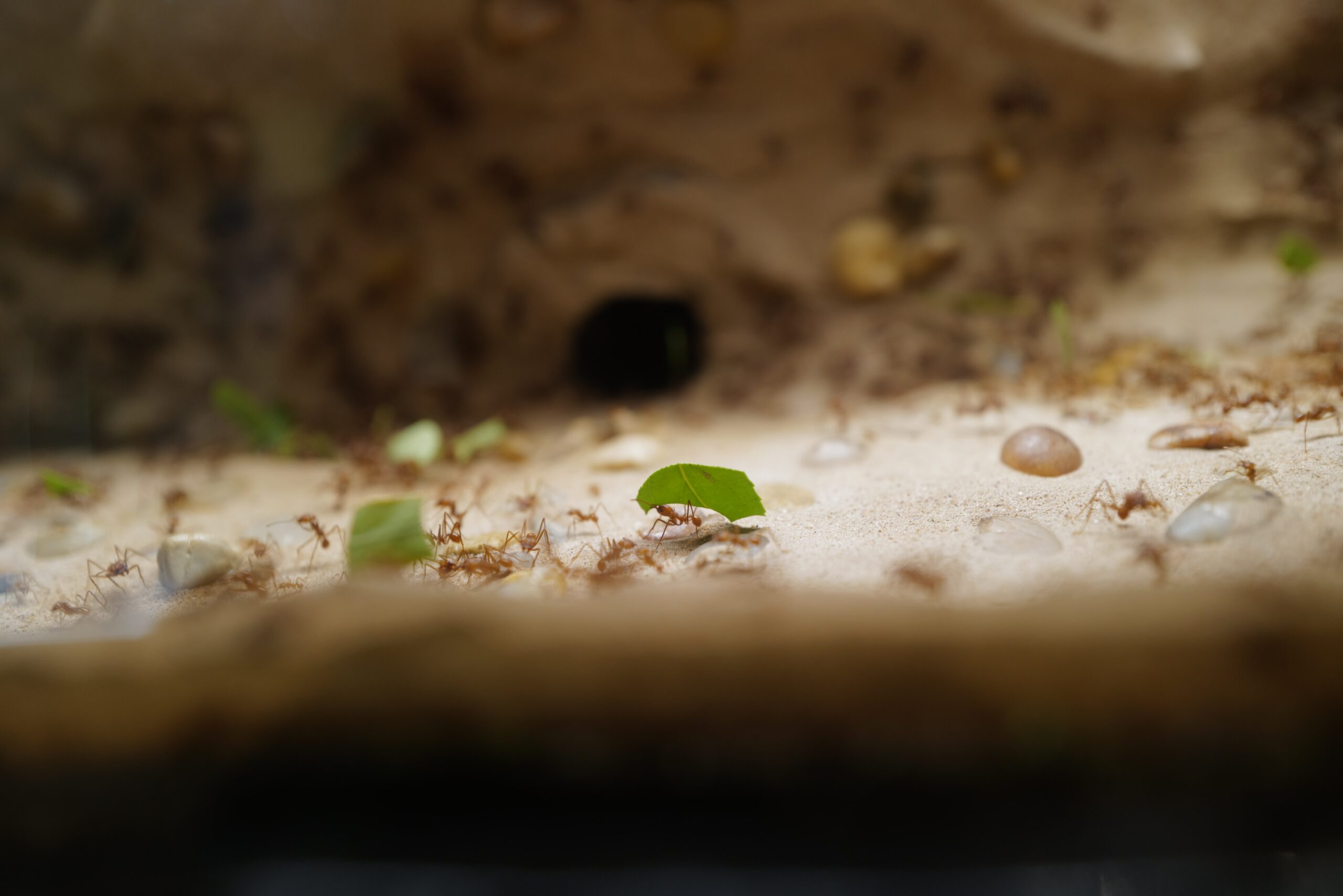
By Petra Eperjesi, Forest School Canada manager
“There’s nothing here,” she says, looking around.
We’re standing in a grassy schoolyard. There’s a tarmac. A line of spruce trees. Some boulders on the other end of the field.
“Huh. What do you mean?” I ask.
“There’s nothing here!” she says, more forcefully.
“What do you think should be here?” I try another tack.
“Liiiiiike, ants?” she says.
“Oh, huh, yeah, I guess I would expect there to be ants here, too.”
I walk over to the blanket we’ve laid out on the grass by the spruce tree line. It’s under a little tarp we’ve strung up in the trees in an effort to create some dry space on this rainy October day. I collect two magnifying glasses from among the various story books and nature guides, art supplies, and thrift store pots and pans and baskets we’ve arranged under the tarp, and hand one to her. (In other words, she “safely uses [a] teacher-selected tools…to extend the sense of observation” – a skill highlighted in the continuum for scientific inquiry/experimentation in the Ontario Science/Technology Curriculum) (13).
“Let’s double check for ants,” I say, getting down on all fours.
We look for a while. Sure enough, no ants.
“You’re right!” I look at her. “There are no ants here! I wonder why?”
It’s a genuine question on my part. “Where could they be?”
“Hmmm, maybe they’re looking for food?” She’s got a theory now. In fact, she’s asking “questions that demonstrate curiosity about the world around her”, “questions that can be answered through tests/experimentation” (13). More emerging scientific inquiry/experimentation skills.
“Oh yeah. What do ants eat, do you think?”
No answer. I’ve learned (the hard way!) that no answer means no interest. So I let that question go, but if I had been her full time teacher, I would have noted that as a possible area of inquiry to return to. We’re quiet for a bit.
Then: “Maybe they’re in their homes.”
Yes! Another line of inquiry: we could conduct research about where ants live and why?
As a teacher, for any of these authentically arising questions, I could support (and ultimately report on) the skills identified in the Continuum for Scientific Inquiry/Research/Experimentation Skills (13-15) by:
- Helping her to create a test/experiment to answer her question(s) and make predictions about the outcomes
- Preparing or helping her to create an “organizational system for gathering and organizing information”
- Selecting or helping her select a variety of resources with which to do the research and then with the process of identifying the important pieces of information (we’re also in literacy territory, here!)
- Helping her to record the information she gathers, in relation to the original question(s)
- Inviting her to compare her findings with her original theories and reflect on how her thinking has changed
- Inviting her to share her process, orally or in writing (again – crossover with literacy expectations)
We’re laying in the grass at this point, looking closely at the tiny, intricate world that exists there under our feet, hidden. We’re also deep into one of the four major strands of the Ontario Science and Technology Curriculum: Understanding Life Systems.
In Grade 1, the fundamental concepts of the strand are energy and sustainability and stewardship. As a Grade 1 teacher, I would therefore work to channel the child-led interest in ants toward an exploration of where ants get their energy – i.e. what ants eat – and how they use their energy – i.e. what they build (where they live), etc. – and how that relates to the sun. The question implicit in the child’s statement, “there’s nothing here!” is “why aren’t there ants here?”, and that would likely lead us right to human interactions with ants and what they need to survive, so we’re into stewardship and sustainability: we could explore, “What would need to change for their to be ants in this schoolyard?”
Let’s keep looking through the curriculum:
| Grade | Fundamental Ideas | Ways to Explore |
| 1 | Energy
Sustainability and Stewardship |
|
| 2 | Growth and Changes in Animals
Sustainability and Stewardship |
|
| 3 | Growth and Changes in Plants |
|
| 4 | Habitats |
|
| 5 | Human Organs |
|
| 6 | Biodiversity |
|
And so on… you get the idea – starting from the child’s interest (or frustration!) and using that as the pathway to the curriculum! All that from a frustrated 8 year old saying “there’s nothing here!”
As it turns out, there’s a lot here! We just have to learn how to see it.
